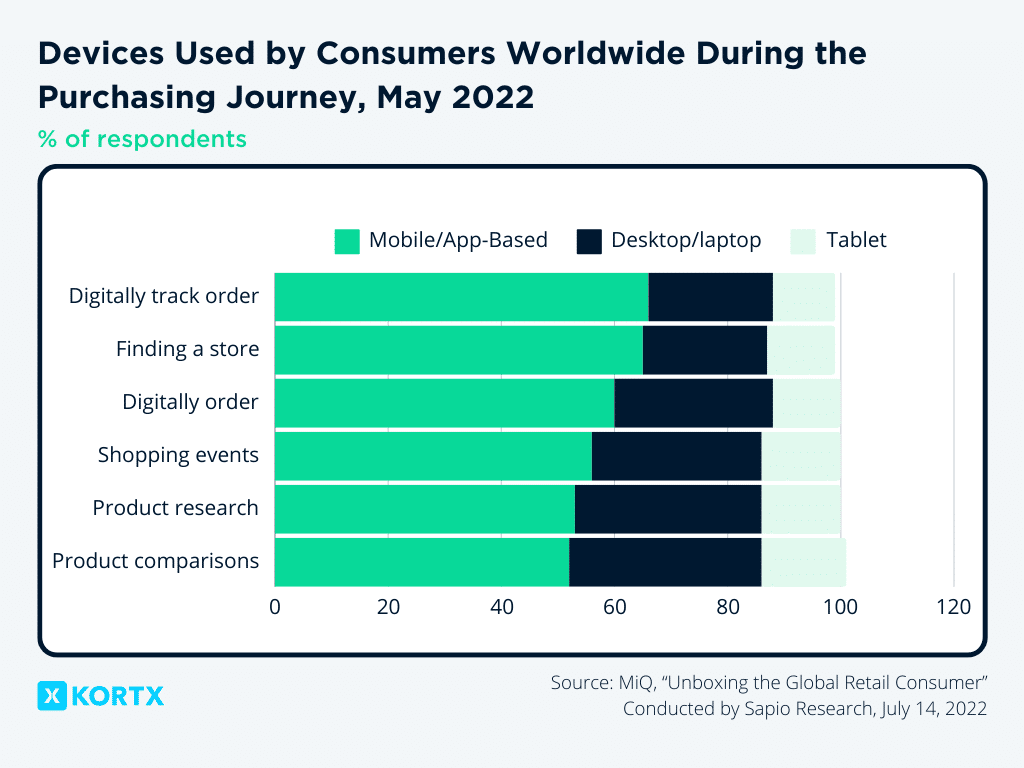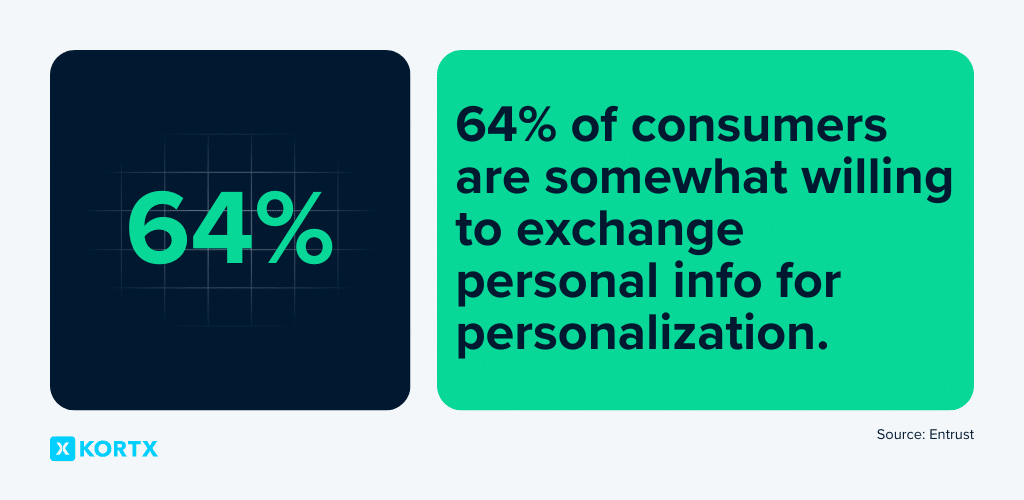Experiences refined for people
Experiences refined for people
Only a tiny fraction of customers convert on their first ad view. Connected TV (CTV) retargeting is an effective strategy to re-engage them. Advertisers can track viewers’ interaction with a CTV ad and then serve related ads on their mobile or desktop.
Explore what CTV retargeting is, how it helps recapture interested leads, and how it works to help you reach your most qualified audience.
CTV advertising often serves as an initial strategy in a campaign, using its broad reach to cast a wide net, which is especially effective for building top-of-funnel awareness.
Retargeting then focuses on viewers who engaged with the initial CTV ad(s), increasing conversion likelihood by targeting those already showing interest.
What is the goal of Connected TV retargeting?
“The decline in reliability of Third-Party data and the narrow focus of contextual targeting on location rather than the individual underscore the need for a more refined approach. Lookalike modeling challenges this notion by utilizing shared behaviors and characteristics, leading to precise targeting and efficient budget use. It offers deep insights into customer preferences, aligns closely with like-minded audiences, and adapts to shifting customer bases, ensuring enhanced engagement and optimal use of advertising budgets.”

Connected TV retargeting goes beyond merely showing the same ad over and over. It employs advanced techniques such as sequential messaging that strategically delivers messages in a specific order to enhance effectiveness.
Sequential messaging involves showing ads in a specific order through different marketing channels to guide the customer through the buying cycle.
There are two ways this is done:
Cross-device CTV retargeting is most common and recommended, as audiences typically use multiple devices throughout their buying journey. On average, a household accesses over ten connected devices, using them at various stages of the purchase process.

Example: If viewers watch a car advertisement on their Connected TV device, they might later see a related ad for the same car model while browsing on their smartphone or laptop.
Connected TV retargeting offers distinctive advantages over traditional digital retargeting methods. Below, we explore how it does this.
First-time website visitors only convert 2.4% of the time, while 48% of all e-commerce transactions are made by returning visitors who have previously added items to their cart. This rate is nearly double that of first-time visitors, with 14.8% for returnees compared to 7.6% for newcomers.
Warm leads are easier to convert than cold leads. I-COM found that retargeted users are eight times cheaper to reach per click and that retargeted display ads had a 180% higher click-through rate and a 292% higher conversion rate.
For apps, retargeting can boost conversion rates by 38%, increase visit frequency by 62%, and increase the number of products browsed per user by 224%.
Brands need user data to run targeted campaigns. For consumers, some data points are more appropriate to collect than others.
64% are somewhat willing to exchange personal information for enhanced personalization. 83% are comfortable with apps and services using biometric data, indicating a preference for convenience and personalized experiences.

This willingness is coupled with growing data privacy concerns. 79% of consumers are at least somewhat concerned about their data privacy, while 64% have grown more aware or concerned over the past year.
Brands must navigate the delicate balance between personalization and privacy with transparency and respect for consumer preferences.
Retargeting strategies focus on individuals who have already shown interest in a brand, whether through visiting your website, engaging with your content, or previous purchases.
Marketing efforts are concentrated on a highly relevant and potentially more receptive audience, increasing conversion potential.
Retargeting and cross-device targeting allow brands to engage with their audience across multiple platforms–from smartphones and tablets to laptops and Connected TV.
Using insights from user interactions across different devices, advertisers can deliver personalized ads that resonate with the consumers’ current needs and preferences, regardless of device.
📚 Related article: The Art of Cross-Device Targeting
Explore how cross-device targeting optimizes campaigns for increased relevance and success.
Before exploring Connected TV retargeting and its attribution methods, you must clearly define your target audience and select the appropriate inventory for your campaign. This initial preparation sets you up for success from the campaign’s outset.
The steps below are general guidelines for setting up CTV retargeting campaigns. Keep in mind that every business’s needs are different.
Begin your Connected TV retargeting campaign by defining a comprehensive audience persona. This involves integrating various data sources to form a detailed profile of your target viewers.
Key data sources should include:
A persona isn’t a detailed description of one specific person but a description that represents a segment or many segments based on research of your target audience. For instance, if your target marketing is “marketers,” you may have multiple personas for different types of marketers broken up by business size, industry, or whatever reflects your business.
From here, you’ll craft your ad messaging around these personas so your ads attract the most receptive audience likely to buy.

Demographics:
Viewing Preferences:
Device Usage:
With KORTX Intelligence, you can unlock your brand’s full potential and understand your customer before delivering a single impression.
Incorporate a tracking pixel into your Connected TV ad creative to monitor when and where the ad is served and track its success.
Here’s how to pixel your CTV ad:
Tracking pixels enable precise retargeting through data-driven strategies.
With the tracking pixel in place, launch your CTV retargeting campaign to deploy the ad and expand the viewer pool exposed to it.
Here’s how to manage this phase:
Launch the Connected TV ad campaign according to the defined parameters set up to serve the targeted audience personas established in Step 1.
Gather data from every ad impression, documenting viewer behaviors and the specific devices used during the ad plays.
From the collected data, categorize the audience into segments based on who has viewed the ad. Save these viewer identifiers (Device IDs linked to household IDs) in a dedicated retargeting segment for those exposed to the ad.
Enhance viewer profiles using device graphs to connect multiple devices under the same user profile. This allows for comprehensive retargeting across all linked devices (e.g., mobiles and tablets related to the exposed Connected TV).

The KORTX Device Graph helps track CTV retargeting campaigns.
🔎 Case study success: KORTX’s Device Graph & NFM
Learn how NFM and KORTX achieved 9.8X ROAS by using the KORTX Device Graph for precise audience targeting.
Based on the insights gained from the initial Connected TV ad exposure, develop personalized ads across all devices (including CTV) identified via the device graph. This will maintain the communication thread with the audience, regardless of the device they are using.
Integrate this segmented audience as a specific split in a broader display campaign, which could also target other viewer segments and optimize ad engagement across various audience pools.
A “split” refers to a subdivision of campaign targets, organized by specific characteristics such as demographics or behavior, to tailor ad delivery strategically. For instance, one split may include viewers initially exposed to the Connected TV ad, while other splits target different interaction levels or demographic factors.
Testing during a CTV retargeting campaign is typically not performed until after the campaign’s end. Ongoing adjustments may involve additional resources and expenses that not all clients find justifiable.
Should you actively test during a campaign or after the campaign ends?
“KORTX does not routinely test retargeting within Connected TV campaigns unless specifically requested by a client. The value derived from such testing is insufficient to justify the effort as a standard practice.
Occasionally, if a client expresses interest in exploring the retargeting of a CTV campaign, we will certainly accommodate that request. However, it’s important to recognize that the audience targeted by a CTV campaign is not inherently more valuable than any other prospect; they have simply been exposed to an ad. Even if they are segmented and retargeted through a display campaign, their value as prospects remains comparable to those who have not seen the ad.
This perspective is based on typical user behavior, where viewing an ad doesn’t necessarily indicate an increased likelihood of conversion compared to other forms of engagement. Thus, while there is some potential for incremental benefit in retargeting these viewers, it is generally not sufficient to warrant the additional complexity and cost of doing so routinely.”

After a CTV retargeting campaign concludes, conduct a thorough post-campaign analysis to measure its overall success and inform future strategies. Review which devices were exposed to ads, tracking the user journey across devices—from initial exposure to final conversion.
For instance, this analysis might show that a user first saw an ad on a desktop and later made a purchase on a mobile device. Identify which campaign elements were most effective, such as specific creative content, precisely targeted audience segments, or the best times for engagement.
A practical approach to evaluating the success of CTV retargeting campaigns emphasizes tangible business outcomes. It moves away from abstract metrics like brand sentiment, which are difficult to quantify and do not directly link to immediate results.
Instead, prioritize tangible results to obtain clear, quantifiable evidence of campaign success like:
By focusing on these metrics, you can derive concrete insights into the campaign’s performance.
Post-campaign studies provide insights into advertising success, audience behavior, and brand engagement. However, it’s important to consider their cost-efficiency and practical value.
Conducting detailed post-campaign studies typically involves significant investment, often starting at around $15,000. This substantial cost can be a barrier, especially for smaller campaigns or businesses with limited marketing budgets.
Many businesses find that the return on investment (ROI) for these studies does not justify the expense, as the outcomes do not always lead to groundbreaking insights that can be actioned upon.
Focusing on real business outcomes—specifically ROAS and attributed revenue—offers a more accurate and financially justifiable measure of a campaign’s success.
Particularly for products sold in physical locations, such as Consumer Packaged Goods (CPGs), foot traffic and brand lift studies can measure the direct impact of advertising on in-store visits and sales.
However, there are some limitations. The external factors often unaccounted for in such studies can skew the results, making it difficult to attribute any observed lift directly to the campaign.
For instance, a significant influencer campaign or a seasonal spike in interest (e.g., ice cream sales in summer) could coincide with the ad campaign, inflating the perceived effectiveness of the advertising efforts.
Given the high costs of post-campaign studies, would you recommend alternative methods?
“Definitely. Traditional methods like Nielsen and FourSquare foot traffic reports are not cost-effective and often fail to deliver actionable insights.
It’s better to invest that budget back into media spend and focus on real business outcomes such as return on ad spend (ROAS) and directly attributed revenue, which are concrete metrics that truly reflect a campaign’s success and ensure that our marketing efforts directly align with business objectives.”

Connected TV retargeting uses sophisticated tracking and cross-device targeting to re-engage audiences. This strategy not only optimizes ad spend and ROI by targeting warm leads but also maintains engagement across the consumer’s purchase journey.
Build awareness through Connected TV ad targeting and drive conversions across channels with our expert team.
Drew Pytel is a Senior Account Strategist at KORTX. He enjoys golf, bourbon, and being active with his wife and three kids.
From us to your inbox weekly.